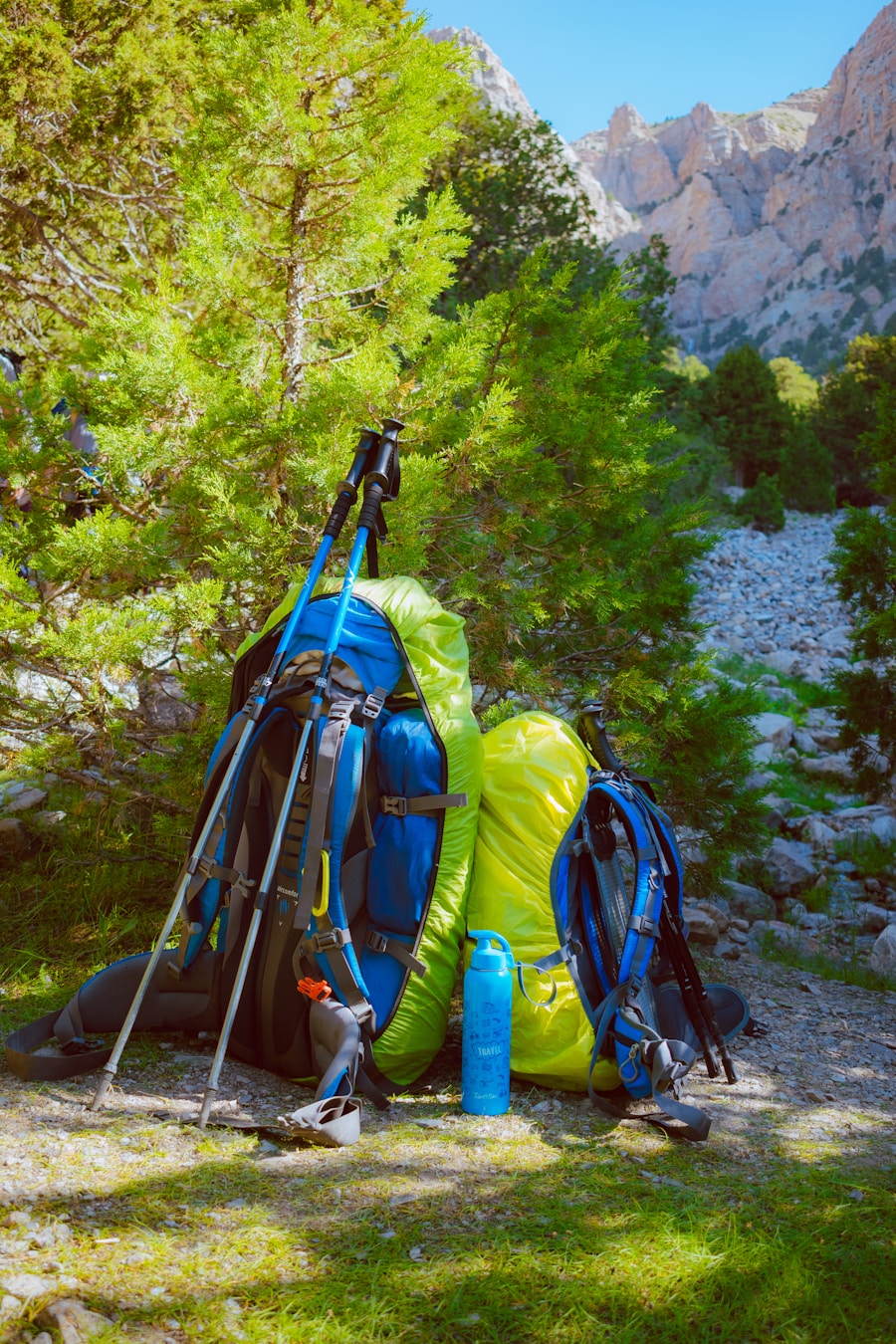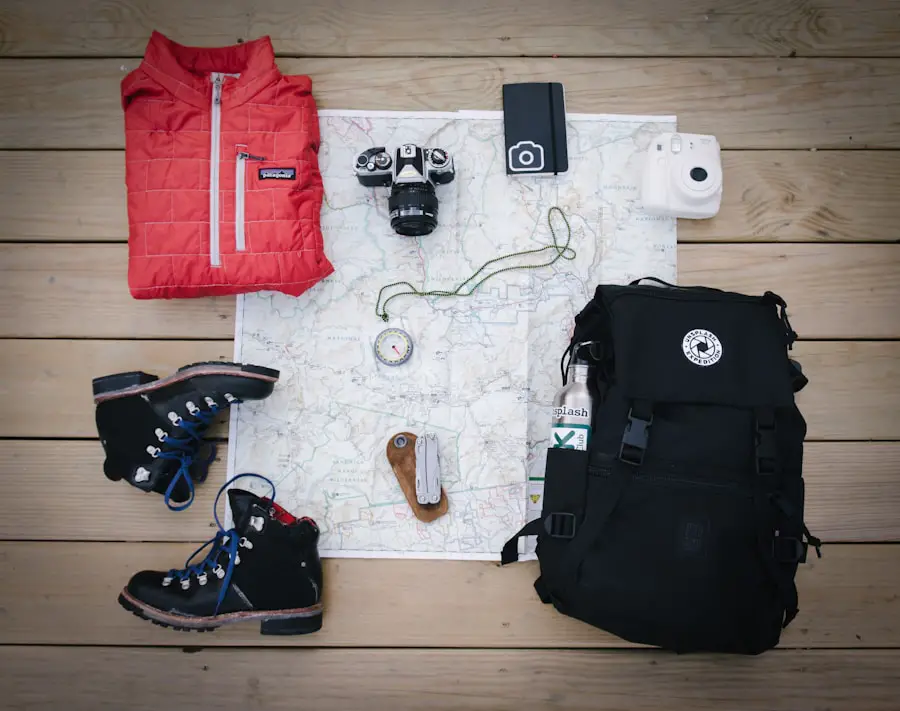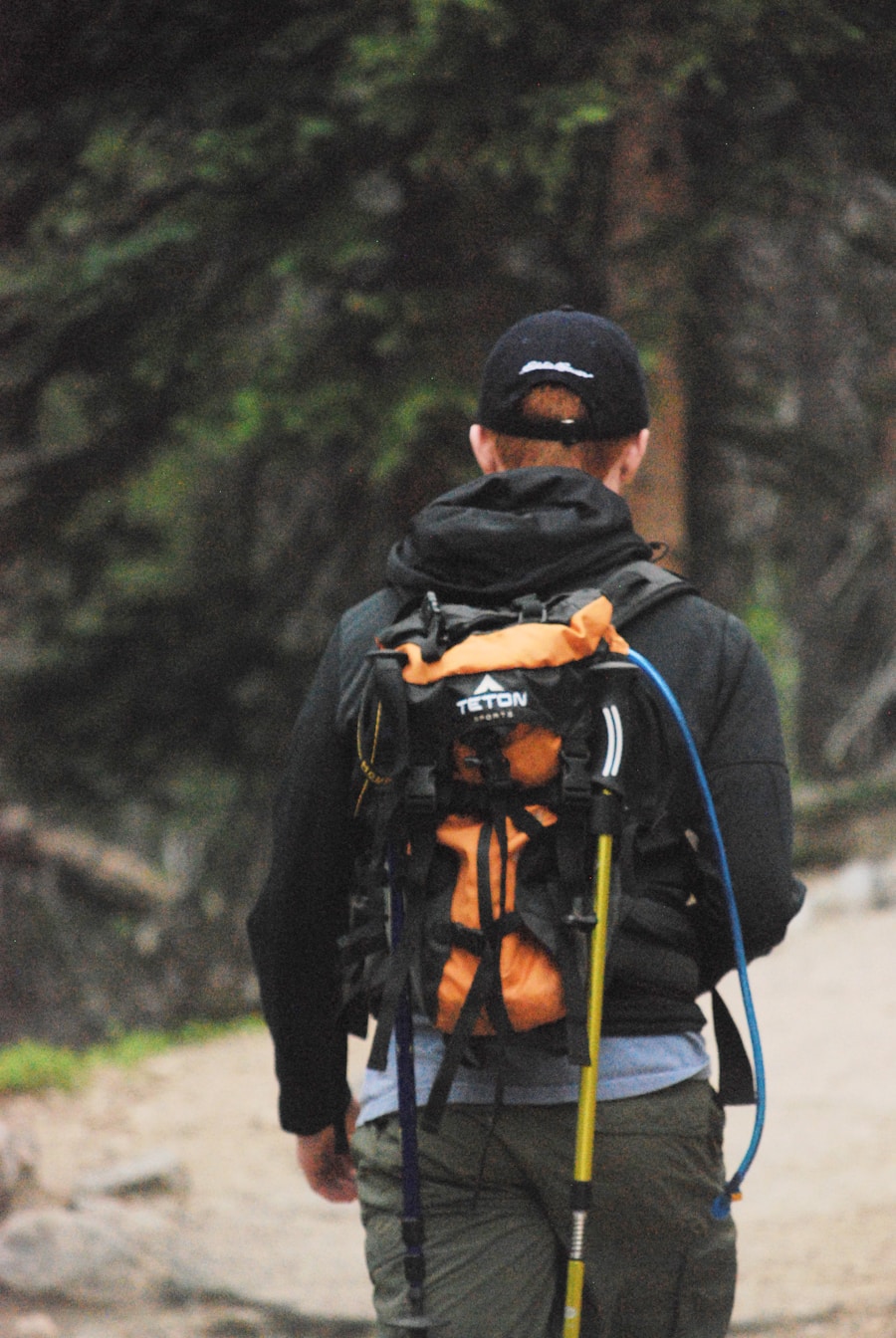Selecting the appropriate backpack is a critical first step in preparing for any hiking adventure. The right pack not only enhances comfort but also ensures that you can carry all necessary gear without straining your body. When choosing a pack, consider the duration of your hike.
Day hikes typically require smaller packs, often ranging from 15 to 30 liters, while multi-day excursions necessitate larger packs, usually between 50 to 70 liters. The size of the pack should correspond to the amount of gear you plan to carry, including food, water, clothing, and shelter. Another essential factor is the fit of the backpack.
A well-fitted pack distributes weight evenly across your body, reducing fatigue and discomfort. Most backpacks come in various sizes to accommodate different torso lengths, so it’s crucial to try on several options. Look for adjustable straps, padded hip belts, and a supportive back panel.
Additionally, consider the pack’s features, such as pockets for organization, hydration reservoir compatibility, and external attachment points for trekking poles or sleeping bags. A pack that meets your specific needs will significantly enhance your hiking experience.
Key Takeaways
- Choose a hiking pack that fits your body comfortably and has the right capacity for your trip duration and gear needs.
- Pack lightweight, moisture-wicking clothing and sturdy, comfortable footwear to protect against the elements and prevent blisters.
- Bring high-energy, non-perishable snacks and a hydration system to stay fueled and hydrated on the trail.
- Include a first aid kit, emergency whistle, and navigation tools like a map and compass for safety and preparedness.
- Consider packing a lightweight, weather-resistant shelter and a warm sleeping bag for overnight trips, along with a sleeping pad for comfort.
Packing Essentials: Clothing and Footwear
When it comes to clothing for hiking, layering is key. The three-layer system—base layer, insulation layer, and outer shell—provides flexibility and adaptability to changing weather conditions. The base layer should be moisture-wicking to keep sweat away from your skin; materials like merino wool or synthetic fabrics are excellent choices.
The insulation layer, which can be a fleece or down jacket, retains body heat during cooler temperatures. Finally, an outer shell made of waterproof or windproof material protects against the elements. Footwear is equally important in ensuring a successful hike.
Hiking boots or shoes should provide adequate support and traction on various terrains. When selecting footwear, consider the type of hiking you will be doing; for instance, lightweight trail runners may suffice for well-maintained paths, while rugged boots are necessary for rocky or uneven trails. It’s also essential to break in new shoes before embarking on a long hike to prevent blisters and discomfort.
Don’t forget to pack extra socks made from moisture-wicking materials to keep your feet dry and comfortable throughout your journey.
Food and Water: Tips for Staying Fueled and Hydrated

Proper nutrition and hydration are vital components of any hiking trip. When planning meals, opt for lightweight, high-calorie foods that are easy to prepare and consume on the go. Trail mix, energy bars, dried fruits, and jerky are excellent choices that provide quick energy without weighing you down.
For longer hikes, consider packing dehydrated meals that only require hot water for preparation. These meals are compact and can be quite nutritious, offering a satisfying option after a long day on the trail. Hydration is equally crucial; carrying enough water is essential to avoid dehydration.
A general rule of thumb is to drink about half a liter of water per hour of moderate activity in moderate temperatures. Depending on the length of your hike and the availability of water sources along the trail, you may need to carry a hydration reservoir or multiple water bottles. If you plan to refill from natural sources, invest in a reliable water filter or purification tablets to ensure safe drinking water.
Staying hydrated not only keeps your energy levels up but also helps maintain focus and stamina during your hike.
Safety and First Aid: What to Include in Your Pack
| Item | Quantity |
|---|---|
| Band-Aids | 10 |
| Gauze pads | 4 |
| Adhesive tape | 1 roll |
| Antiseptic wipes | 6 |
| Tweezers | 1 |
| Scissors | 1 pair |
| Instant cold pack | 1 |
| Emergency blanket | 1 |
Safety should always be a top priority when hiking, which makes having a well-stocked first aid kit essential. A basic first aid kit should include adhesive bandages in various sizes, antiseptic wipes, gauze pads, adhesive tape, and pain relievers such as ibuprofen or acetaminophen. Additionally, consider including items like blister treatment pads, tweezers for splinters, and a small emergency blanket for warmth in case of unexpected weather changes or injuries.
Beyond first aid supplies, it’s wise to carry safety items such as a whistle, a multi-tool or knife, and a headlamp with extra batteries. A whistle can be invaluable in emergency situations for signaling help without exhausting yourself by shouting. A multi-tool can assist with various tasks from food preparation to gear repairs.
Furthermore, a headlamp allows you to navigate in low-light conditions while keeping your hands free for other tasks. By preparing adequately with safety gear, you can mitigate risks and respond effectively to emergencies that may arise during your hike.
Navigation and Communication: Tools for a Successful Hike
Navigating unfamiliar terrain requires reliable tools and resources. A topographic map of the area is indispensable; it provides detailed information about elevation changes, trails, and landmarks that can help you stay oriented. While GPS devices and smartphone apps offer convenience and real-time tracking capabilities, they can be unreliable in remote areas due to poor signal reception or battery depletion.
Therefore, always carry a physical map and know how to read it alongside your compass. Communication tools are also vital for safety during hikes. If you’re venturing into remote areas where cell service may be limited or nonexistent, consider carrying a satellite phone or a personal locator beacon (PLB).
These devices can send distress signals in emergencies and provide peace of mind when exploring isolated regions. Additionally, informing someone about your hiking plans—including your route and expected return time—can be crucial in case of an emergency. This simple step ensures that someone will know to look for you if you do not return as planned.
Shelter and Sleeping Gear: Must-Haves for Overnight Trips

For those planning overnight hikes or camping trips, selecting appropriate shelter and sleeping gear is essential for comfort and safety. A lightweight tent or tarp is crucial for protection against the elements; choose one that is easy to set up and offers adequate space for you and your gear. Consider factors such as weight, weather resistance, and ventilation when selecting your shelter.
For solo hikers or minimalist campers, ultralight tents or bivy sacks can provide sufficient protection without adding excessive weight. Sleeping gear also plays a significant role in ensuring restful nights on the trail. A sleeping bag rated for the expected temperatures will keep you warm during chilly nights; down sleeping bags offer excellent insulation-to-weight ratios but may not perform well when wet unless treated with water-resistant coatings.
Pair your sleeping bag with an inflatable or foam sleeping pad to provide insulation from the cold ground and enhance comfort while sleeping. These items are essential for maintaining energy levels during your hike by ensuring you get adequate rest.
Additional Gear: Extras to Consider for Your Hiking Pack
While the essentials are crucial for any hiking trip, additional gear can enhance your experience significantly. For instance, trekking poles can provide stability on uneven terrain and reduce strain on your knees during descents. They are particularly beneficial for long hikes where fatigue can set in over time.
Many hikers find that using poles helps maintain balance while navigating rocky paths or crossing streams. Another useful addition is a portable camp stove or cooking system if you plan on preparing hot meals at your campsite. Lightweight stoves are available that use canisters or liquid fuel; they allow you to boil water quickly or cook simple meals without the hassle of building a fire.
Additionally, packing a lightweight chair or sitting pad can make breaks more comfortable after long stretches of walking. These extras may seem minor but can significantly improve your overall hiking experience by providing comfort and convenience.
Packing Techniques: How to Maximize Space and Comfort
Efficient packing techniques can make a significant difference in how comfortable you feel while hiking. Start by organizing your gear into categories—clothing, food, cooking equipment, safety items—and pack heavier items close to your back for better weight distribution. This positioning helps maintain balance and reduces strain on your shoulders and hips during the hike.
Utilizing compression sacks for clothing or sleeping bags can save space within your pack while keeping items dry and organized. Additionally, consider using packing cubes or stuff sacks to separate smaller items; this method allows for easy access without having to dig through your entire pack each time you need something. Finally, ensure that all straps are tightened properly after packing; this not only prevents items from shifting but also helps maintain stability as you move along the trail.
By employing these packing techniques, you can enhance both comfort and efficiency on your hiking adventures.
If you’re looking to pack efficiently for your next hiking trip, you may also want to consider investing in a compact pair of binoculars for hiking. These binoculars are lightweight and easy to carry, making them a great addition to your pack. Check out this article on compact binoculars for hiking for some recommendations on the best options available.
FAQs
What should I consider when packing my hiking pack?
When packing your hiking pack, consider the weight distribution, accessibility of essential items, and the weather conditions of your hiking destination.
What are the essential items to pack in my hiking pack?
Essential items to pack in your hiking pack include water, food, navigation tools, first aid kit, extra clothing layers, sun protection, and emergency supplies.
How should I distribute the weight in my hiking pack?
Distribute the weight in your hiking pack evenly to maintain balance and stability. Place heavier items closer to your back and towards the middle of the pack.
What are some tips for organizing my hiking pack?
Organize your hiking pack by using packing cubes or stuff sacks to separate and categorize items. Utilize the pockets and compartments of the pack for easy access to frequently used items.
How should I adjust my hiking pack for a comfortable fit?
Adjust the shoulder straps, hip belt, and load lifters of your hiking pack to ensure a comfortable and secure fit. The pack should sit snugly against your back without causing discomfort or strain.
